This large female was basking no more than a foot from her crayfish burrow. Most of the habitat in this fen has 5-6 inches of standing water with lots of sedges over top of the water, but in this particular area the elevation changed by maybe a foot or two and the area was damp but had no standing water. There were crayfish burrows everywhere and its amazing how a slight change in elevation can create habitat that rattlesnakes will utilize, all the rattlesnakes we would see on this day would be in this particular area of the fen.
While the guys were photographing this snake, I ventured a little further away to see if I could find some more turtles. My path was interrupted however,as I almost stepped on our fourth and final massasauga of the day basking in cover right next to her burrow.
The majority of this large fen had standing water, and this low depression in the fen had actually filled with water over time and become a small permanent pond. We decided to check the pond and surrounding areas for our main target, an very seldom seen little turtle that inhabits these types of habitats. It didn't take long for my friend Bryan to spot our first turtle of the day.
Spotted Turtle - Clemmys guttata
Spotted Turtles are a small, secretive species that inhabits fens and marshes such as the place we were at on this particular day. They prefer shallow, clear water ecosystems with a mucky or muddy bottom with plenty of emergent vegetation for them to bask on. This small individual was doing just that, soaking up some sun on a patch of sedges right along a small meander of water in the fen. Spotted Turtles are Michigan's rarest turtle species and are listed as a Threatened species in the state. The main factors for their decline in Michigan and throughout their range is habitat loss and illegal collection. Because of their handsome appearance and small size, Spotted Turtles are a highly sought after species in the pet trade and some individuals can go for a lot of money on the black market. Sadly, some populations that were once robust have been reduced to very low numbers and in turn have suffered from a loss of genetic diversity. Because of their habitat preferences, Spotted Turtles don't have nearly the same problems with nest predation by raccoons that other species like the Wood Turtle, Blanding's Turtle, and Eastern Box Turtle have. After shooting a few photos of the little guy, we headed farther out into the fen and before long I spotted a dark spot ahead of me in the sedges.
This was our second Spotted Turtle of the day, an adult male. Most of the turtles we saw on this day were basking in the same fashion that this guy was. We only shot a few photos from a distance and moved onward. Because Spotted Turtles are a state protected species, we tried to ensure that we did not harass any animals beyond what was necessary in order to get a few photos. In this case, this male was in a textbook position and made for a great photo that did not require handling him. We moved back to an area where we had seen the rattlesnake early in the day and before long I noticed this big girl in front of me.
I called out to the guys that I had found a rattlesnake, and as they were traversing over JP almost stepped on another massasauga basking a few feet away from the one I had just found. He dropped his camera bag down near where the snake he had seen was so that we could get a look at it once we got some photos of the snake I had found. This large individual was resting right next to its crayfish burrow, but didn't seem to alarmed at our presence right next to it. We pulled back the sedges over he top of it in order to get a few shots of the snake without disturbing it, this snake was even larger than the first one we had seen, right around the 28-30" range.
Eastern Massasauga Rattlesnake - Sistrurus catenatus catenatus
The massasaugas at this location were quite light in coloration compared to the individuals I'm used to seeing. This was also the first opportunity I've had to observe a massasauga in southwest Michigan, as all of the individuals I had seen previous to this day had been in southeast Michigan. I was impressed at how healthy and fat these snakes were, especially considering the fact that they had just emerged from a long winter. We shot a few photos of this big snake, and then moved over to where JP had seen the other snake, and I was elated to see that the snake was a juvenile massasauga, probably a newborn from last summer.
According to Jim Harding, this population is rumored to have suffered some declines many years ago as there were reports on intentional killing of rattlesnakes at this site and its status was unknown. We only explored a small portion of the fen, and four massasaugas including this small individual. With signs of reproduction going on and a good cluster of snakes, it seems that this population is managing to hold on. Just as we were packing up our camera gear, Bryan called out that he had found a big snake. Before we could get close enough to see what it was, he yelled, "Racer!" I ran in his direction and got a glimpse of an extremely large Blue Racer and managed to chase is down and get a hand on it. As soon as I grabbed it, it swung right up and let me know it didn't appreciate being grabbed. In hopes of avoiding another bite, I placed it in a small Cedar tree nearby where it sat comfortably for a few minutes and allowed us to snag a few quick shots.
Blue Racer - Coluber constrictor foxii
Not far away, JP spotted another Blue Racer laying in a loose coil in the fen. Upon our approach, the snake coiled and held its ground instead of taking off. It coiled, rattled its tail, and struck vigorously at us as we shot some photo. Most racers I've seen take off rather than stand and hold their ground, but this small adult was an exception that made for a great photo shoot.
Blue Racer - Coluber constrictor foxii
I called the guys over and we grabbed our cameras for a quick photo session. This was the largest rattlesnake we saw on the day, and it was easily apparent that this was a gravid female. We used some equipment to pull back the grass over top of her to get some photos, but were careful not to disturb her in any way shape or form. She buzzed loudly and gave us a great pose for some photos.
Eastern Massasauga Rattlesnake - Sistrurus catenatus catenatus
After shooting some photos of this big girl, we moved on in hopes of finding a few more turtles. We eventually got near the edge of the fen where the water levels were much higher and began seeing turtles again. I spotted a very shy adult male Spotted Turtle basking on some sedge and then JP managed to get his hands on a juvenile Blanding's Turtle that was basking on some sedge nearby as well. It was the first juvenile Blanding's Turtle I've ever seen and was one of the day's highlights.
We eventually got ourselves out of the fen and into some nearby woods as we headed back to the car. As were heading back, we followed the sound of some Wood Frogs to a nearby vernal pool and decided to check it out in case there were any salamander egg masses or salamanders along the edge of the pool under logs and other cover.
As were were walking towards the pool, we noticed a large group of turtles basking on a fallen tree in the middle of the pool. As we got closer all of them dropped into the water before we could get a good look at them. Having our suspicions, we decided to check it out and were pretty amazed what we found.
Spotted Turtle - Clemmys guttata
We managed to find nine Spotted Turtles swimming around in the vernal pool, bringing our total on the day to thirteen. From what I know and have read, Spotted Turtles utilize vernal pools in the northeast during the spring. However, I've always heard of them being strictly associated with marshes and fens here in Michigan and have only heard of one instance of them being found in vernal pools in Michigan. The pool was a long distance from the fen and it would be an understatement to say that all of us were surprised. It was an amazing way to cap off a truly memorable day in the field that I won't soon forget. That's all for now. Until next time, happy herping!


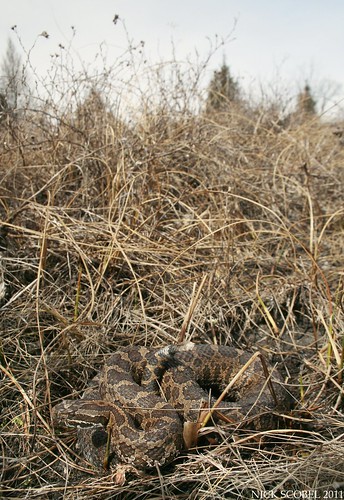

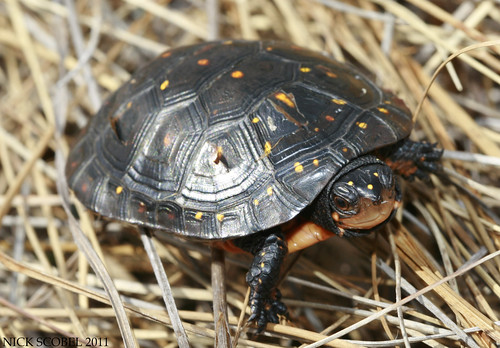
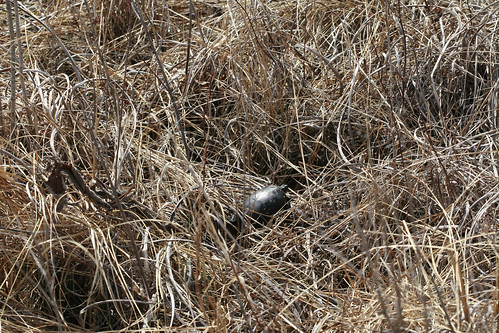




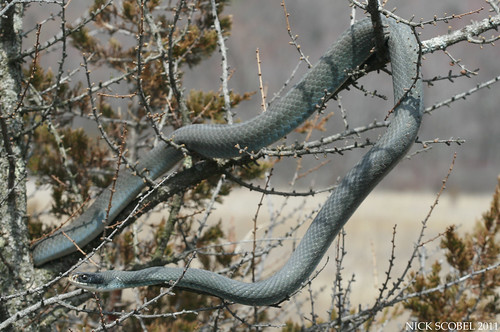
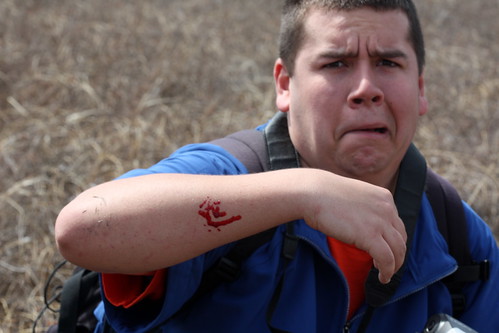
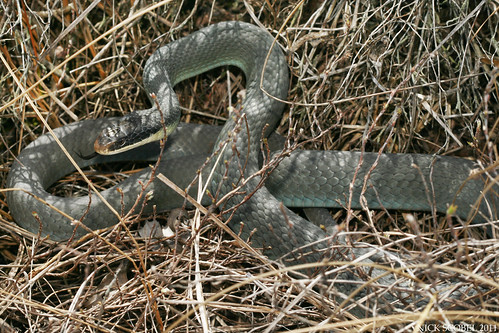
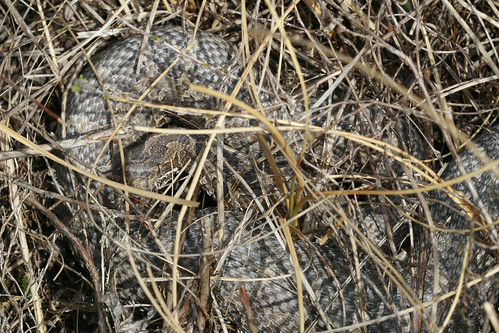
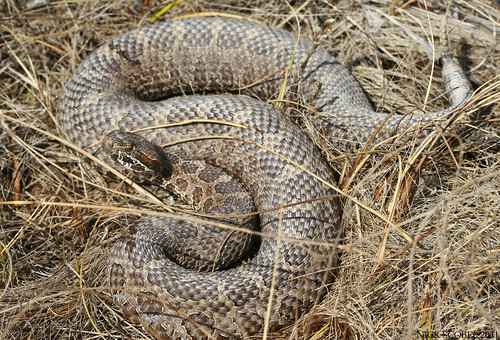
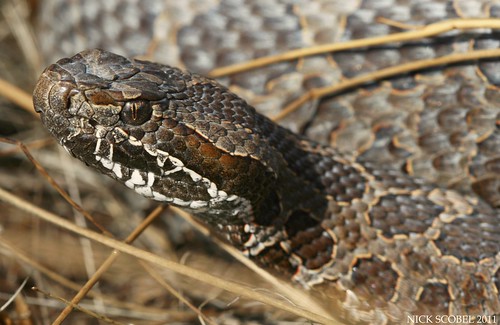

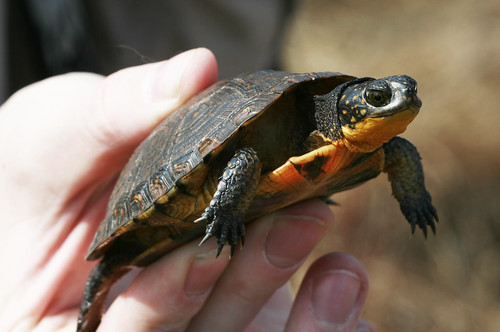
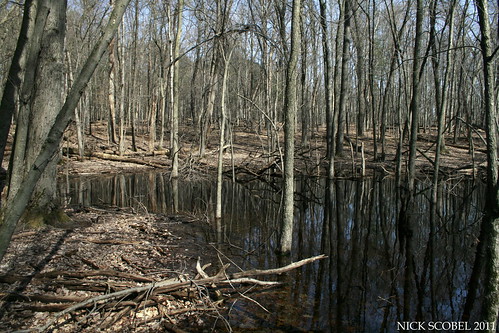
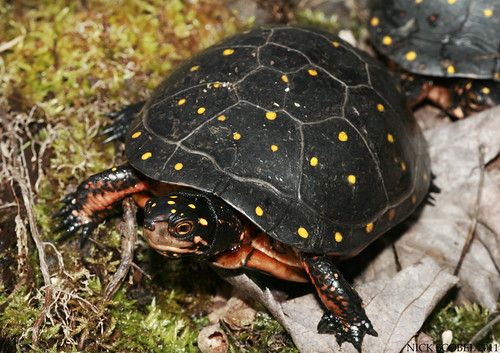
Hey man excellent day! I told you they use the vernals out that way though... Super jealous I couldn't make it out there for it all.
ReplyDeleteBH
Thanks man, it was a great day for sure. Will be getting back out there in early May.
ReplyDelete